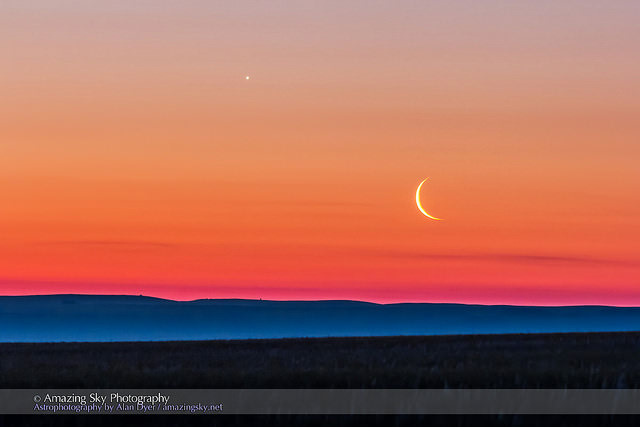Key Takeaways:
- The Waxing Crescent phase is an intermediate phase of the Moon that occurs after the New Moon and lasts until the First Quarter, with its illuminated surface increasing up to 50%.
- During the Waxing Crescent, our energy grows, making it an ideal time to set new intentions and visualize plans for the upcoming month.
- The Waxing Crescent Moon is visible in the western sky just before noon, becoming more prominent around sunset, and setting around midnight.
- The Moon’s phases are divided into eight descriptions, each representing the amount of the Moon’s illuminated part visible from Earth.
- Distinguishing between the waxing and waning Moon can be done by observing the position of the shadow part during sunset, with the waxing Moon showing the shadow on the left (Northern Hemisphere) or right (Southern Hemisphere).
Article Summary: The Waxing Crescent is a captivating and influential phase of the Moon, commencing after the New Moon and extending until the First Quarter. During this period, the illuminated surface of the Moon grows from a mere 0.1% to an impressive 49.9%. Despite being an intermediate phase, the Waxing Crescent occupies around 21.6% of the lunar month, leaving a significant impact on us.
This phase, named for its crescent-like shape resembling a curved banana, indicates the gradual increase in the Moon’s light. It signifies a time of heightened energy, making it the perfect moment to set new intentions and envision future plans with added vigor.
The Waxing Crescent Moon graces the sky, rising shortly before noon, becoming more prominent during sunset, and setting around midnight. As it follows the Sun’s path, it illuminates the western sky and instills a sense of hope and optimism.
To comprehend the Moon’s phases better, they are categorized into eight descriptions based on the amount of the illuminated part visible from Earth. These phases include the New Moon, Full Moon, First and Third Quarter, Waxing Gibbous, Waning Gibbous, and the Waning Crescent, each carrying its own symbolic significance.
Distinguishing between the waxing and waning Moon is relatively straightforward. In the Northern Hemisphere, a waxing Moon will have the shadow part on the left during sunset, while in the Southern Hemisphere, the situation is reversed. Conversely, a waning Moon will not be visible at sunset, rising later in the night until it reaches the waning crescent phase.
In conclusion, the Waxing Crescent phase of the Moon marks a time of growth, energy, and intention-setting. Understanding the different lunar phases enhances our connection with the celestial rhythms that impact our lives in subtle yet profound ways.
Read full article on The Nine Planets
#1

The lighting under the bridge in Guangzhou, makes it look like a crescent moon in the water
#2

The waning crescent Moon below Venus, rising in the east on June 24, 2014 as seen from home over the flat prairie horizon of southern Alberta, Canada. Credit and copyright: Alan Dyer.
#3

Moon and Venus Conjunction approximately 1 hour before sunrise on 24th June 2014. Looking east over central London with Canary Wharf on the horizon. Credit and copyright: Roger Hutchinson.
#4

Venus and Waning Crescent Moon on June 24, 2014. Credit and copyright: Stephen Rahn.
#5

A crescent moon hovers over fir trees on a sloping shoreline with the first light of day creating a beautiful burning red in the sky, while below the flowing waters of the ocean and Kennebec Rivers pass, catching the reflection of the moon. Copyright: Benjamin Williamson
#6

Crescent Moon by Felisberto Soares, Porto, Portugal. Equipment: Canon EOS 500D, tripod, Helios 135mm f2.8 manual lens.
#7

Lunar Crescent by Aprill Harper, Blunham, Bedfordshire. Equipment: SkyWatcher 8″ Dobsonian, Samsung NX1000 Camera
#8

An astronaut captured this image of the crescent moon from the International Space Station while the orbiting laboratory was above the Sea of Japan. (Image credit: NASA)


